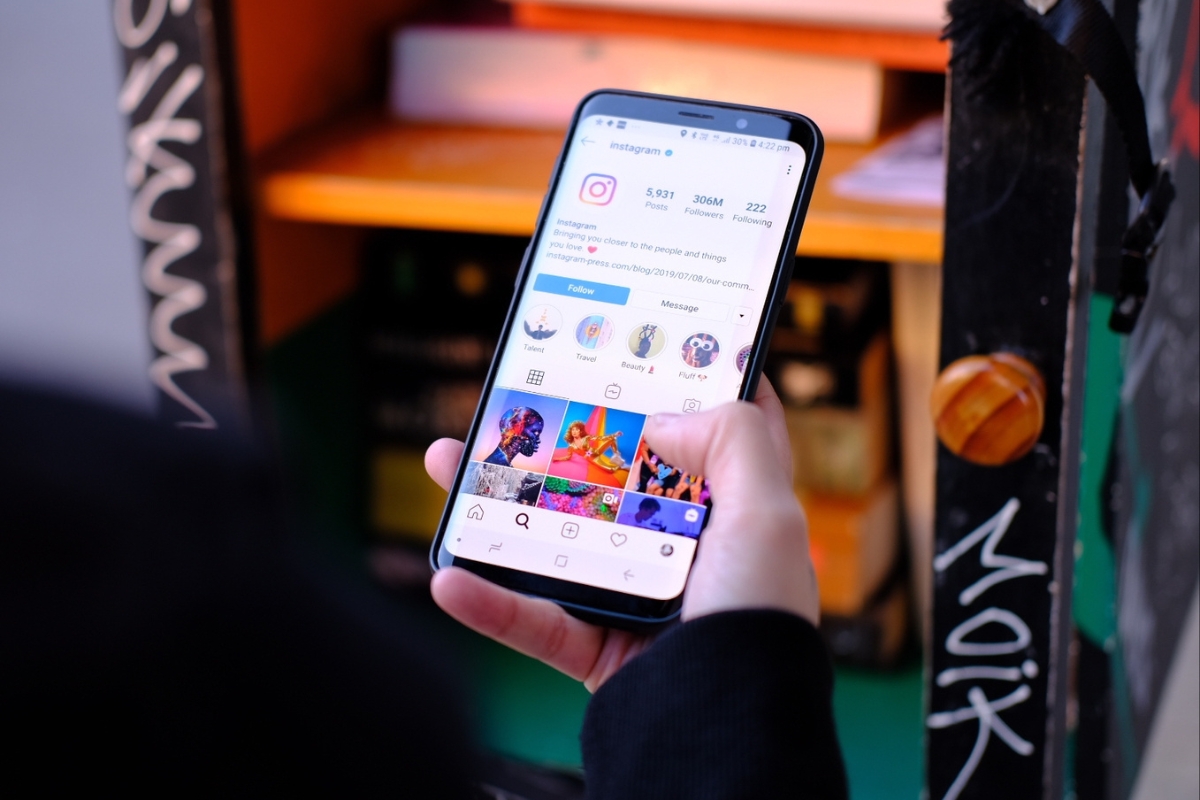Instagram Stories have become a powerful tool for brands and creators to connect with audiences in real time, but keeping viewers engaged is the key to making an impact. With just seconds to capture attention, your content needs to be visually compelling, strategically crafted, and authentically aligned with your message. From interactive features to creative storytelling techniques, mastering Instagram Stories can elevate your digital presence and boost engagement. In this guide, we’ll break down the best practices for creating captivating Stories that resonate, convert, and keep your followers coming back for more.
Engaging Instagram Stories That Stop the Scroll
What Are Instagram Stories and Why Are They Essential for Engagement?

Instagram Stories are short photo or video posts that disappear after 24 hours. They offer a fast, casual way to share updates, give a glimpse behind the scenes, or highlight a limited-time promotion. Unlike regular posts, Stories don’t stay on your profile permanently, making them a great tool for timely content that encourages immediate interaction.
Stories have become essential for engagement because they make it easy for audiences to connect with a brand in real time. People can respond directly through messages, vote in polls, or swipe up to learn more, which increases interaction and builds a stronger relationship between businesses and followers. The format is designed to be quick and simple, making it easier for users to tap through multiple updates without feeling overwhelmed.
Businesses use Stories to create urgency and keep their audience interested. This can include flash sales, event reminders, product demos, or sneak peeks at upcoming launches. Since the content disappears within a day, viewers feel a stronger push to watch and respond before it’s gone. That sense of immediacy is what drives more frequent engagement. The format also allows brands to show a more human side. Behind-the-scenes clips, team takeovers, or casual updates make businesses feel more approachable. These moments help build trust, especially when the tone remains authentic and consistent. Adding recognizable visual elements, like logos or brand colors, helps reinforce that connection while keeping your Stories visually on-brand.
Instagram’s algorithm also rewards activity on Stories. If your followers frequently interact with your content—whether it’s tapping through your Stories, replying to a poll, or sending a message—your future posts are more likely to show up higher in their feed. In this way, Stories don’t just boost short-term engagement. They also help improve long-term visibility. Another advantage of Stories is how easily they fit into a wider marketing strategy. For example, if you’re running a promotion or launching a new product, you can use Stories to introduce the campaign, highlight the benefits, and direct users to your website or online store. You can even use real-time feedback from your viewers to quickly adjust your messaging or presentation if needed.
This flexibility is a major reason why marketers rely on Stories as a testing ground. You can try different types of content—like videos, photos, polls, or countdown timers—and see what resonates. If one approach gets more clicks or replies, you can double down on that strategy in future updates or apply it to other channels. Stories also support broader goals beyond engagement. When paired with your email campaigns, blog content, or other social media posts, they help create a consistent message across platforms. They can guide users through different stages of your marketing funnel, from awareness to conversion, especially when you’re offering exclusive deals or time-sensitive promotions.
How Can You Create Compelling Instagram Story Content Ideas?

Creating engaging Instagram Stories starts with knowing your audience and how they interact with the platform. The best content is built around what your followers want to see, whether that’s quick updates, product highlights, or personal insights from your team. Story content should feel immediate and relevant, encouraging users to react, respond, or click through to learn more.
To come up with ideas, look at what your followers already engage with on your feed. Pay attention to the kinds of posts they like or comment on, then think about how that could be adapted for a Story. Use platform features like polls, questions, countdowns, and quizzes to invite interaction. These tools don’t just increase engagement—they also give you direct feedback from your audience. Trend-watching is another useful way to stay relevant. If something is gaining traction—like a popular meme format or social challenge—you can adapt it to fit your brand voice. Keeping up with competitors is also helpful. See what types of Stories other businesses in your space are posting and take note of what gets high engagement.
Data can also guide your content. Use Instagram Insights to review your past Story performance. Pay attention to completion rates and exit points to understand which content keeps people watching. Pair that information with broader analytics, such as website traffic or campaign performance, to find links between Story content and conversions. Consistency is key when it comes to presentation. Stories that follow a clear visual theme are easier for viewers to recognize and connect with. Whether it’s through recurring colors, fonts, or layout, a familiar look helps reinforce your brand every time someone taps through.
What Types of Instagram Story Content Drive the Most Engagement?
Certain types of content tend to perform well across industries. Stories that feel real and unpolished often get the most attention. Behind-the-scenes glimpses, quick tips, and user-generated content all build trust and make your business feel more relatable. Limited-time offers and product launches also work well, especially when paired with countdown timers or direct links.
Teasers for upcoming events, sneak peeks of new products, and quick “how it’s made” clips can stir curiosity. If you’re running a promotion or sale, make it clear and use interactive elements like polls or swipe-up links to create a direct path to conversion. Keep things short, clear, and visually appealing so users don’t tap away. Well-written captions also make a difference. A thoughtful caption can give context to a visual and encourage a stronger response. This is especially helpful when you’re aiming to drive traffic to a blog post, product page, or sign-up form.
How to Use Story Templates and Examples for Inspiration?
Story templates can make content creation faster and more consistent. Many design tools offer customizable templates that include placeholders for images, text, and interactive stickers. These are especially useful if you want to maintain a branded look without starting from scratch each time. Looking at successful campaigns can also spark ideas. For example, some brands have gained traction by showing day-in-the-life content or sharing customer testimonials as a series. These formats are easy to replicate and can be tailored to your own messaging. The goal is to create something that feels both polished and personal.
Which Content Ideas Work Best for Different Industries and Niches?
Not all content types work equally well for every business. For retail or e-commerce brands, Stories are a great place to feature new arrivals, time-sensitive discounts, or live unboxings. These visual formats help customers feel closer to the products and encourage fast action. Service-based businesses often benefit from educational or behind-the-scenes content. You might use Stories to explain your process, introduce team members, or answer frequently asked questions. These approaches help build trust and show what sets your business apart.
Creative or tech-driven companies can focus on showing progress, prototypes, or new features in action. Screen recordings, walkthroughs, or time-lapse videos offer useful insights without being too polished. In every case, the most effective Stories are the ones that match your audience’s interests while staying true to your brand’s voice. Keep the focus on clarity, relevance, and engagement, and your Instagram Stories will continue to play a valuable role in your broader marketing strategy.
What Are the Best Design and Visual Storytelling Practices for Instagram Stories?

Instagram Stories rely heavily on visuals, but good design alone isn’t enough. The most effective Stories use visual storytelling to guide the viewer through a clear message or narrative. Each frame should contribute to a larger idea, whether you’re promoting a product, highlighting customer feedback, or introducing your team. The goal is to be both visually appealing and purposeful.
Story design should be simple and direct. Each image or clip must be easy to understand at a glance, especially on mobile screens. Keep the layout clean, avoid overcrowding the frame with too much text, and use consistent fonts and colors that reflect your brand. When these elements work together, they create a cohesive experience that reinforces your identity and improves retention. A consistent visual language helps users recognize your content immediately. This includes your color palette, logo placement, and tone of voice. These small choices build familiarity over time and play a key role in how your audience remembers and relates to your brand.
How to Use Visual Storytelling to Make Stories More Captivating
To hold a viewer’s attention, you need to think of each Story as part of a sequence. Even if a post only lasts a few seconds, the flow from one frame to the next should feel intentional. For example, a product launch might begin with a teaser image, followed by short videos showing product features, and end with a final prompt encouraging action. This approach builds anticipation and gives the viewer context. Visual storytelling works best when there’s a natural rhythm. Start with a hook, build interest, and finish with a clear message. Use smooth transitions to guide the viewer, and make sure there’s a logical structure to what you’re showing. This format keeps users engaged and helps prevent them from tapping away.
What Design Tools and Branding Tips Enhance Instagram Story Appeal?
Many creators use tools like Canva or Adobe Express to streamline the design process. These platforms offer templates tailored for Instagram Stories, helping users maintain a professional look without advanced design skills. These tools also support brand consistency, allowing you to set your colors, fonts, and layout styles across multiple campaigns.
Strong branding comes down to clarity and repetition. Using the same color schemes and visual style across your Stories strengthens your identity. Your logo doesn’t have to be front and center in every frame, but it should be included in a way that feels natural. Keeping your content visually consistent builds trust and helps reinforce your message. It’s also important to design for mobile users. High contrast between text and background, vertical orientation, and minimal clutter go a long way in making your content easy to view. If users can’t read your text or make sense of what you’re showing, they’ll swipe past without engaging.
How to Optimize Text, Graphics, and Animation for Maximum Impact
A successful Story balances visual and written content. Text should support the message, not distract from it. Stick to short, punchy lines that are easy to read quickly. Avoid placing text too close to the edge of the frame or overlapping important visuals. Use bold fonts or background shading when needed to maintain legibility. Animations can add energy, but overuse can overwhelm the viewer. Stick to simple transitions and movements that support the flow rather than compete with it. For example, sliding text or fading images can create motion without being too distracting. On the other hand, flashing graphics or busy motion effects can be off-putting and reduce clarity.
Graphics and overlays should draw attention to key parts of your message. Highlighting a product feature, a limited-time offer, or a user response with a simple graphic can improve comprehension and encourage interaction. The goal is to guide the eye naturally from one part of the screen to another without confusion. When done well, Instagram Story design becomes more than just decoration—it becomes a tool for communication. Every choice, from layout to animation, should support the message you’re trying to share. Consistent, well-planned design not only makes your Stories more watchable but also more memorable.
How Do Interactive Elements Like Polls and Quizzes Boost Instagram Story Engagement?

Interactive features like polls, quizzes, and question boxes are valuable tools for increasing engagement on Instagram Stories. They allow users to participate in a quick, low-effort way, which boosts interaction and keeps viewers watching longer. Rather than passively scrolling, people get the chance to give feedback, share opinions, or learn something new—all within a few taps.
These features also give brands useful data. Polls can reveal audience preferences, quizzes can show what viewers know or want to know, and open-ended questions can surface fresh insights. When used consistently, these interactions help build a stronger connection with followers and shape future content. Viewers feel involved, which increases trust and keeps them coming back for more. Because these tools are native to the platform, they’re easy to use and don’t require extra steps like leaving the app. This seamless experience keeps engagement high and allows brands to create a more personal relationship with their audience in real time.
What Interactive Stickers Should You Use to Increase Viewer Participation?
Instagram offers a variety of stickers that can turn an ordinary Story into a more engaging one. Polls are great for getting a quick yes or no or offering two choices. They work well for product feedback, audience preferences, or just fun questions. Quizzes, on the other hand, are useful when you want to test knowledge or share educational facts in an entertaining way.
Question boxes invite open responses, making them ideal for gathering thoughts, feedback, or even user-generated content ideas. Emoji sliders offer a visual way for users to show how they feel about a product, announcement, or event. Each of these features encourages some form of interaction, which helps the Story rank better in Instagram’s algorithm and increases the likelihood of your content being seen by more people.
The key is using the right type of interaction for the context. A new product launch might benefit from a quiz, while a casual behind-the-scenes clip might be more suited to a quick poll.
How to Create Polls, Quizzes, and Question Stickers That Drive Interaction
To make interactive elements effective, they need to be simple and clearly tied to the content of the Story. Don’t overthink the questions—make them easy to understand and answer. For instance, if you’re posting a sneak peek of a new design, a poll asking “Love it or leave it?” is quick and effective. Quizzes should have a playful tone while still delivering value. Use them to highlight product features, test user knowledge, or tease upcoming content. Even if viewers don’t get the answer right, they’ll remember the detail better.
Always include a clear call to action, such as “Vote now,” “Pick your favorite,” or “Tell us what you think.” The simpler and more direct the prompt, the more likely people will engage. Over time, reviewing your past results can help you understand what resonates best with your audience and adjust your content accordingly.
What Are the Best Practices for Using Interactive Features Consistently?
Consistency matters. The more frequently you use these tools, the more familiar and comfortable your audience becomes with engaging. But balance is important. Too many polls or repetitive formats can lead to burnout or lower response rates. Instead, build a posting schedule that mixes interactive features with informative or visually rich content. For example, follow up a product teaser with a quiz or share a behind-the-scenes video with a poll attached. This keeps the content flow dynamic and prevents Stories from feeling too promotional or routine.
Review engagement metrics regularly to understand what times of day or days of the week your audience is most active. This helps maximize the reach and effectiveness of your interactive elements. Good visual design also plays a role. Use consistent fonts and color schemes, and make sure text is easy to read over background images. Maintain brand identity, but always prioritize clarity and ease of use.
How Can You Track and Analyze Instagram Story Performance Effectively?

Understanding how your Instagram Stories perform is essential if you want to refine your content and grow your audience. Story analytics give you a window into what’s actually working—what’s capturing attention, where people are dropping off, and what prompts interaction. These insights help shape future content and improve strategy over time.
Tracking performance is more than just counting views. It’s about understanding patterns, testing what resonates with your audience, and using that information to make informed adjustments. Businesses that consistently monitor their analytics are better positioned to deliver content that connects and converts. By identifying which formats, topics, and visuals perform best, you can focus your time and energy where it makes the most impact.
What Key Metrics Should You Monitor in Instagram Story Analytics?
When analyzing Stories, several metrics are especially useful. Impressions show how many times your Story has been viewed, while reach tells you how many unique accounts saw it. These numbers help you understand how far your content is spreading. Reply counts and swipe-ups give a clear sense of how engaging your content is. If people are replying, it means the Story prompted a reaction. If they’re swiping up, it means they’re taking action—visiting a link, exploring a product, or learning more. These types of responses often indicate strong interest and are useful for evaluating how effective your calls to action are.
Exit rates are equally important. They show when people stopped watching your Stories. If you notice that exits consistently happen at a certain point, it might be a signal to shorten your content or rethink the pacing. It can also indicate which types of posts lose attention, helping you avoid similar missteps in the future. Demographic insights like age, gender, and location add another layer of context. If a particular audience segment engages more frequently, you might consider tailoring content specifically for them. This kind of targeting can lead to stronger engagement and better overall results.
How to Use Instagram Insights to Improve Future Story Content
The data provided in Instagram Insights can directly inform your content planning. Stories with high engagement—especially those with lots of replies, swipe-ups, or completed views—are often worth revisiting or repurposing. Analyzing what made them work, whether it was the visuals, the timing, or the topic, can help you create more content in that same style or tone.
For example, if interactive elements like polls or quizzes see more participation, you might include them more often. If product-related posts consistently lead to swipe-ups, it might be worth exploring more behind-the-scenes content or exclusive previews to build curiosity. It’s helpful to check insights regularly, ideally on a weekly or monthly basis, so you can track trends over time. You may notice certain types of content perform better on specific days or times. Use that information to schedule Stories when your audience is most active.
What Tools and Techniques Help Optimize Story Reach and Engagement?
Beyond Instagram’s built-in analytics, third-party tools can offer more detailed reporting and broader social media tracking. These tools can help you view your Instagram performance alongside other platforms, making it easier to see what’s working across channels. Experimenting with different content formats is also important. A/B testing can be a simple but powerful way to compare two versions of a Story and see which one performs better. Try varying the design, length, or interactive features to learn what your audience responds to.
Consistency matters, too. Posting regularly and maintaining a clear visual style helps reinforce your brand and keeps followers engaged. When everything from the colors and fonts to the tone of voice feels unified, viewers are more likely to recognize and trust your content. Finally, treat Story insights as part of a larger digital strategy. Use what you learn to refine other areas of your online presence, from your website to your email campaigns. Tracking and adjusting based on real data is the most reliable way to grow a brand on Instagram—and keep people watching.
How Can Businesses Use Instagram Stories to Drive Conversions and Sales?

Instagram Stories are more than a tool for boosting visibility—they can also play a direct role in generating sales. When used strategically, Stories can guide viewers through each stage of the buyer’s journey, from initial awareness to the final purchase. With features like product tags, swipe-up links, and in-app checkout, brands can reduce the number of steps between interest and action.
Stories work particularly well for showcasing products in context. A quick demonstration, tutorial, or customer testimonial can help someone move from curiosity to decision in a matter of seconds. By layering in timely promotions or limited offers, businesses can create a sense of urgency that nudges users to act before the Story disappears.
Another key factor is storytelling. Rather than relying solely on static product images, brands that use Stories to narrate the “why” behind a product—or share how it fits into a customer’s everyday life—often see higher engagement and conversion. This format allows businesses to meet users in a more relaxed setting, which often leads to more natural and effective results.
What Marketing Strategies Leverage Instagram Stories for Brand Growth
One of the most effective approaches is to align Instagram Stories with other brand content in a way that builds momentum. For example, announcing an exclusive sale in a Story and linking it to a recent post or live video creates multiple chances for users to see and act on that message. Time-sensitive content tends to perform well. Whether it’s a flash sale, new product launch, or limited edition restock, Stories help build anticipation and urgency. Adding countdown stickers or promo codes can encourage followers to act quickly.
Partnering with influencers also expands reach, especially when those partnerships are presented in an authentic, behind-the-scenes way. If someone users already trust recommends your product within a Story, it can significantly increase credibility. User-generated content also plays a valuable role. Reposting real customer reviews or Stories where users tag your product helps build trust and reinforces social proof. This kind of validation, when seen regularly, can lead to higher conversion rates over time.
How to Design Effective Calls to Action (CTAs) in Instagram Stories
Strong CTAs are crucial for turning attention into action. While “Swipe Up” or “Tap Here” might seem basic, how they’re presented can make all the difference. The design should match the rest of your Story while still standing out clearly. Simple visuals, bold fonts, and a clean layout all help ensure the message gets across quickly. CTAs work best when they’re linked to a clear benefit. Instead of simply asking people to take action, explain why they should. For instance, “Swipe Up to Get 25% Off” or “Tap for Early Access” gives users a reason to engage. Positioning the CTA after a short product preview or testimonial can help it feel more natural and less intrusive.
It’s also smart to test different CTA formats. Some users respond better to direct commands, while others engage more with conversational tones. Reviewing performance data on swipe-ups, clicks, and replies can guide future design and content decisions. Instagram Stories are at their most powerful when treated as part of a broader strategy. They shouldn’t just be a highlight reel—they should support a larger effort to connect with your audience, answer their questions, and give them reasons to trust your brand. By consistently combining clear messaging, timely offers, and strong visuals, businesses can turn short-lived Stories into long-term results.
What Are the Best Practices for Creating and Running Instagram Story Ads?

Instagram Story ads blend the reach of paid promotion with the immediacy of full-screen, vertical content. They give brands a chance to connect with users in a more immersive format than traditional posts. When used well, Story ads can significantly boost engagement, drive traffic, and improve conversions.
To get the most out of this format, it’s important to start with a clear understanding of your goals. Whether you’re trying to build awareness, generate leads, or push sales, the design of your campaign should reflect that intention. Strong visual elements, brief and impactful messaging, and a natural flow into a call to action all help Stories perform better. The most effective campaigns feel like they belong in the user’s feed—blending in with organic content while still standing out enough to make an impression.
Before running ads, brands should also evaluate the technical readiness of their landing pages. Ensuring your website is responsive, loads quickly, and matches the ad’s message can make a big difference in performance. Regular audits of your website content and structure can also help you spot areas for improvement before traffic starts rolling in.
How to Set Up Instagram Story Ads for Maximum Engagement?
Story ads are created and managed through Facebook Ads Manager, which offers detailed options for targeting, budgeting, and creative. The format supports videos, static images, and carousel options, all of which should be built specifically for vertical, full-screen viewing. Start by defining your audience. Use demographic details, interests, and behavior insights to target users who are most likely to engage with your content. You can also create custom or lookalike audiences based on website visitors or customer email lists.
Once the audience is defined, focus on visual quality. Story ads need to catch attention quickly. Use clean, branded visuals, short and direct copy, and ensure the call to action is clear. Adding interactive features—like swipe-up links or buttons—encourages users to take immediate action. Throughout the campaign, monitor metrics like view time and tap-through rates to guide adjustments.
What Targeting and Budgeting Strategies Optimize Ad Performance?
Good targeting can make or break a campaign. Alongside basic demographics, consider behavioral data and custom audiences from past interactions. You can also retarget users who visited your site or engaged with previous content. Budgeting should align with your goals. If your focus is conversions, you may allocate more to actions like checkout completions or lead signups.
For awareness, impressions and reach become the priority. Use daily budgets or lifetime campaign limits, and test automated bidding if you’re unsure where to start. Reviewing ad performance consistently is key. Metrics such as click-through rate, cost per result, and conversion rate give insights into what’s working and where adjustments are needed. Retargeting visitors with a second wave of ads is another effective tactic, especially if you already have data on what they viewed or clicked.
How to Measure the Success of Instagram Story Advertising Campaigns
Success comes down to a mix of reach, engagement, and impact on business goals. Instagram provides built-in analytics, including swipe-up rates, exits, impressions, and replies. These indicators help you gauge how viewers are interacting with your ads. Beyond Instagram’s native tools, other analytics platforms can give a deeper view of user behavior after they leave the app. Tracking how many users land on your page, what actions they take, and whether they convert allows you to refine your strategy over time.
Create a system for reporting and review. Weekly or monthly summaries should include data on spend, views, engagement rates, and conversions. Look for patterns in creative performance—like which visuals led to more swipe-ups—and apply those insights to future campaigns. Instagram Story ads offer a fast, engaging way to connect with your audience. With the right creative, targeting, and ongoing analysis, they can become a reliable part of your larger marketing strategy.
Final Thoughts
By crafting engaging Instagram Stories that blend eye-catching visuals, interactive features like polls and quizzes, and clear calls to action, you’ll keep your audience glued to your content and eager to engage. From planning a cohesive narrative flow to leveraging analytics for continuous improvement, these best practices will help your brand stand out in a crowded feed. Ready to elevate your Instagram presence and turn viewers into loyal followers? Newman Web Solutions is here to help—call us at (404) 301-9189 or book your free 30-minute marketing strategy call today to start captivating your audience with our professional social media marketing services like never before!





